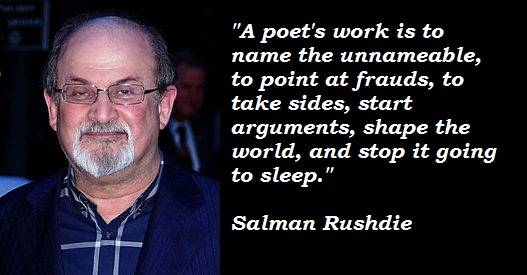In 1967, the CIA Created the Label "Conspiracy Theorists" ... to Attack Anyone Who Challenges the "Official" Narrative
ZeroHedge has ZeroCredibility!
Nope, It Was Always Already Wrong - CSI
A quick search of the Oxford English Dictionary (OED) finds that the phrase had been used in May 1964:
New Statesman 1 May 694/2 Conspiracy theorists will be disappointed by the absence of a dogmatic introduction.
This is two years before Dispatch 1035-960 appeared. If you go to the magazine, you will find that this sentence appears in an unsigned editorial, “Separateness,” about the
London Magazine’s recent transition from being an exclusively literary publication to a more interdisciplinary review of the arts.
So, no. The CIA did not invent the word “conspiracy theorist.” But this made me wonder how far back I could push the use of a term like “conspiracy theory.” Using the
OED to date vocabulary is a dodgy proposition. The oldest example you are likely to find in an
OED definition is unlikely to be the first time the word was used. It might not even be the first time that the word was written down. It just happens to be the oldest example that the dictionary’s lexicographers have found. Nonetheless, we’ll use the
OED as a starting point and just be confident that the word has to be at least as old as the first example found there.
The earliest appearance of “conspiracy theory’ in the OED goes as far back as 1909 to an article from the American Historical Review:
Amer. Hist. Rev. 14 836 The claim that Atchison was the originator of the repeal may be termed a recrudescence of the conspiracy theory first asserted by Colonel John A. Parker of Virginia in 1880.
This sentence appears in Allen Johnson’s review of P. Ormon Ray’s
The Repeal of the Missouri Compromise: Its Origin and Authorship. The sentence that follows it makes quite clear that the phrase is being used in the modern sense: “No new manuscript material has been found to support the theory, but the available bits of evidence have been collated carefully in this volume” (836).
While the
OED is generally considered to be a standard reference work, you can actually push the date back even farther using a more recently developed tool, Google Books. Conspiracy theory is by far the older term. In May 1890, a
theosophical journal calledThe Path dismissed the 1885 exposure of Helena Blavatsky by the Society for Psychical Research, in which it was discovered that Blavatsky relied on an elaborate system of informants for her “psychic” insights, as a “conspiracy theory.” In 1881, the phrase appears in
Rhodes’ Journal of Banking: “As evidence of a conspiracy this showing is pitiful, and in any view, the charge is ridiculous, as no conspiracy theory is needed to account for the facts.” It seems that finance has always been dogged by conspiracy theories.
An even older reference to “conspiracy theory” can be found in the medical literature of 1870, during a public debate about the growth of asylums and the treatment of inmates in the UK. At issue were bruises and broken ribs that patients acquired in the asylums; were these the result of accidental self-injury, perhaps a byproduct of methods of restraint, or were these punitive measures or even preventive measures meant to force compliance? It’s not clear what the result of that debate was, but according to
research by Ian A. Burney, it pitted the
Lancet against
The Journal of Mental Science. Novelist and prison/asylum reform activist
Charles Reade wrote to the editors of the Pall Mall Gazette about the methods of control used in asylums in January 1870, which he came upon researching a novel about private asylums,
Hard Cash. Reade claimed his evidence was a “[...] higher class of evidence than the official inquirers permit themselves to hear. They rely too much on medical attendants and other servants of an asylum, whose interest it is to veil ugly truths and sprinkle hells with rose-water.” (19) This evidence was the testimony of former patients and former keepers:
The ex-keepers were all agreed in this—that the keepers know how to break a patient’s bones without bruising the skin; and the doctors have been duped again and again by them. To put it in my own words, the bent knees, big bluntish bones, and clothed, can be applied with terrible force, yet not leave their mark upon the skin of the victim. The refractory patient is thrown down and the keeper walks up and down him on his knees, and even jumps on his body, knees downwards, until he is completely cowed. Should a bone or two be broken in this process, it does not much matter to the keeper: a lunatic complaining of internal injury is not listen to. (19)
The Journal of Mental Science,
replied to these allegations the following month:
It must, I think, be admitted that the difficulties have been real, or surely they would not have evoked such an extreme hypothesis as that advanced in the
Pall Mall Gazette, by a well-known novelist—an hypothesis which seems to involve every element of the sensational novel. (139)
In a comparison of Reade’s hypothesis to another one, the journal remarked:
The theory of Dr. Sankey as to the manner in which these injuries to the chest occurred in asylums deserved our careful attention. It was at least more plausible that [sic] the conspiracy theory of Mr. Charles Reade [...]. (141)
This use of conspiracy theory, I think, is recognizable with our contemporary understanding.
What is clear is that
“conspiracy theory” has always been a disparaging term. While proponents of alternative knowledge are correct in asserting that it is possible to unfairly discredit someone by calling them a “conspiracy theorist,” they must also remember that just because you are called a conspiracy theorist doesn’t mean you aren’t one.












